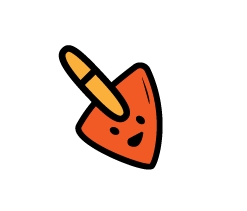Popular News
Reddit’s Best Toy Recommendations by Age: What Actually Keeps Kids Busy 🧸🎨🛝
Screen Time Without Guilt: What Reddit Says About Healthy, Realistic Limits
How Reddit Parents Handle Tantrums: The Most Effective Real-Life Strategies 😤➡️😌
The 2025 Parenting Hacks Reddit Swears By: Simple Tricks That Actually Work 👶✨
Coffee-Shop Silence Is a Parenting Resource: Why “Leaving the House Alone” Refills You Faster
The “Unashamedly For Me” Rule: A Parent Self-Care Plan That Actually Sticks
Exercise as Self-care for Burnt-Out Moms: The Counterintuitive Energy Booster
Comfort Media That Heals: A Parent’s 30-Minute Anti-Doomscroll Routine (Podcasts, TV, Audiobooks)
Latest News
The Laundry Spa Method: How One Boring Chore Can Become Actual Recovery 🧺✨
Why Your ‘Me Time’ Isn’t Working: The Hidden Difference Between Rest, Escape, and Recovery
The Phone-Free First Hour: A Morning Boundary That Gives Parents Their Energy Back
The “Micro-Control Win”: How One Tiny Task (Like Making The Bed) Cuts Parent Burnout Spikes
Recharge That Actually Works: “Do, Don’t Think” Self-Care For Parents Who Are Mentally Fried
Treat Yourself Like a Toddler: The Micro-Needs Checklist for Parents Who Can’t Recharge
When Breathing Doesn’t Work: 7 “Pattern Interrupts” to Stop the Parent–Kid Meltdown Spiral
Stop Doing It All Alone: How to Build a ‘Support Pod’ When You’re Parenting Through Burnout
From Silent Struggle to Shared Load: How to Talk to Your Partner Before Burnout Breaks You
From Superwoman To Sustainable Mom: Resetting Standards So You Can Finally Breathe 💛
Too Tired to Play: A Practical Energy Plan for Parents Who Feel Permanently Exhausted 😴💛
Effective Ways to Provide Kids with Advice They Will Actually Pay Attention to
Recommend News
Aligning on Celebrations Without Drama
12/04/2025
Authoritative Parenting: The Balanced Approach Every Parent Should Know 👨👩👧👦✨
12/04/2025
Self-Care Isn’t a Spa Day: The “Tiny Joy” Recharge Plan for Working Parents
12/03/2025
One Quiet Day, Big Reset: How to Turn a Solo Day Off into Real Energy (Not Just More Chores)
12/03/2025
Quiet Time 2.0: The Nap-Replacement Routine That Creates Real Recovery (Not Just More Chores)
12/02/2025
“Self-Care Isn’t More Time—It’s Fewer Transitions”: The ‘One-Block’ Method for Busy Parents
12/02/2025
Calm Without Silence: How To Decompress When Your Kids Are Still Climbing On You 😮💨🧸
12/01/2025

